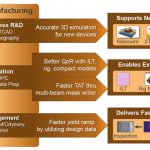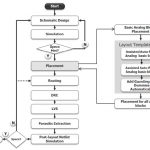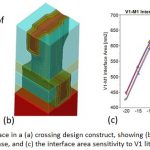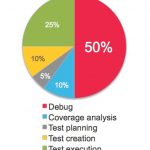Since Aart de Geus, co-CEO and co-founder of Synopsys, gave his keynote at the Synopsys User Group (SNUG) conference in Silicon Valley last March, I’ve been hearing a lot more about the “Shift Left” in semiconductor design. Although I couldn’t attend Synopsys’ 25[SUP]th[/SUP]SNUG, I found some short videos on the Synopsys website… Read More
Electronic Design Automation
MIPI CSI-2 and DSI IP? Better with FPGA Prototyping Set
Sourcing MIPI CSI-2 or DSI IP to a respected IP vendor is mandatory to build a peripheral IC or a SoC targeting mobile application as the chip maker simply can’t afford to do a re-spin because of Time-To-Market imperative. Buying this IP to a vendor also offering MIPI powered FPGA Prototyping Platforms is even better! Northwest Logic… Read More
TCAD Enables Moore’s Law to Continue
We live in very interesting times, you can wear an Android watch from Samsung that uses 14 nm FinFET technology, attend the 52nd DAC conference in June to learn about EDA and IP vendors supporting FinFET, and read about research work for new devices down to 5 nm. TCAD is that critical software technology that enables the development… Read More
TSMC 10nm Readiness and 3DIC
At the TSMC Technology Symposium last month Suk Lee presented a lot of information on design enablement. Suk is an interesting guy with a unique background in ASIC, Semiconductor, EDA, and now Foundry. In baseball terms that would be like playing infield, outfield, home plate, and umpire!
Around the turn of the millennium Suk actually… Read More
Fractal at DAC 2015 – What’s new?
I have been observing Fractal Technologiesexhibiting at DACyear after year, and every year they have demonstrated good value added features in their tools for SoC and IP development. This year at 52[SUP]nd[/SUP] DAC Fractal’s booth number is 1110. Earlier in this year Fractal had added a new ‘Cdiff’ feature in its flagship product… Read More
Can You Really Automate Analog IC Layout?
Digital IC design has been largely automated with high-level languages, RTL coding, logic synthesis, and automated place and route tools. What about analog IC layout automation, is it possible? A few EDA companies think that it is possible and even practical. In recent memory there were two companies really focused on analog … Read More
Automating Timing Closure Using Interconnect IP, Physical Information
Timing closure is a “tortoise” for some system-on-chip (SoC) designers just the way many digital guys call RF design a “black art”. Chip designers often tell horror stories of doing up to 20 back-end physical synthesis place & route (SP&R) iterations with each iteration taking a week or more. “Timing closure”, a largely… Read More
How Good Are Your Clocks?
One of the trickiest tasks in designing a modern SoC is getting the clock tree(s) right. The two big reasons for this:
- the clocks can consume 30% or more of the power of the whole chip, so minimizing the number of buffers inserted is critical to keeping power under control
- the clock insertion delay and clock skew have a major impact on
PDK Generation Needs Paradigm Shift
For any semiconductor technology node to be adopted in actual semiconductor designs, the very first step is to have a Process Design Kit (PDK) developed for that particular technology node and qualified through several design tools used in the design flow. The development of PDK has not been easy; it’s a tedious, time consuming,… Read More
SoC Debugging Just Got a Speed Boost
Sure, design engineers can get more attention than verification engineers, but the greater number of verification engineers on SoC projects means that the verification task is a bigger bottleneck in a schedule than pure design work. A recent survey conducted at Cadence shows how verification effort can be divided into several,… Read More









Quantum Computing Technologies and Challenges